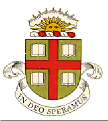 EN224: Linear Elasticity
EN224: Linear Elasticity 
 EN224: Linear Elasticity
EN224: Linear Elasticity 
Division of Engineering
1. The simplest possible derivation of the Kelvin State. Assume that the solution is to be generated from Papkovich-Neuber potentials
satisfying
Here, we have chosen the body force to be a Dirac delta sequence centered at
. By taking Fourier transforms of the governing equations for above, find the Papkovich-Neuber potentials
that generate the required solution. You will find the inverse transform you need in the table in Section 3.2 of the online lecture notes. The answer is in there too, somewhere!
2. Papkovich-Neuber potentials for the Doublet states. Let
denote the Papkovich-Neuber potentials for the normalized Kelvin state, i.e. a point force of unit magnitude acting in the
direction at the origin. Let
denote the doublet states, i..e.
Show that
may be generated from Papkovich-Neuber potentials
(To show this, start with the expression for displacements derived from the Papkovich-Neuber potentials. Differentiate it to get the displacements for the doublet states, then show that the Papkovich-Neuber representation above gives the correct expression).
Hence, verify that the Papkovich Neuber potentials for the doublet states centered at the origin are
3. Center of Compression. Using the results of the preceding section, find the displacement, strain and stress fields associated with a center of compression at the origin, i.e., find
4. Center of compression in a sphere. Using superposition and the results of problem (3), find the displacement fields induced by a center of compression at the center of a sphere of radius a. Assume that the surface of the sphere is free of traction.
5. Dilatation at the center of a sphere due to arbitrary surface traction. Using the result of problem (4), show that the dilatation at the center of a sphere of radius a due to
a self-equilibrating distribution of traction t acting on its surface is
where r is the position vector of a point on the sphere’s surface relative to the origin, and
B denotes the surface of the sphere. Verify the predictions that were made in our proof of Saint-Venant's principle. What happens if the tractions act tangent to the surface of the sphere?